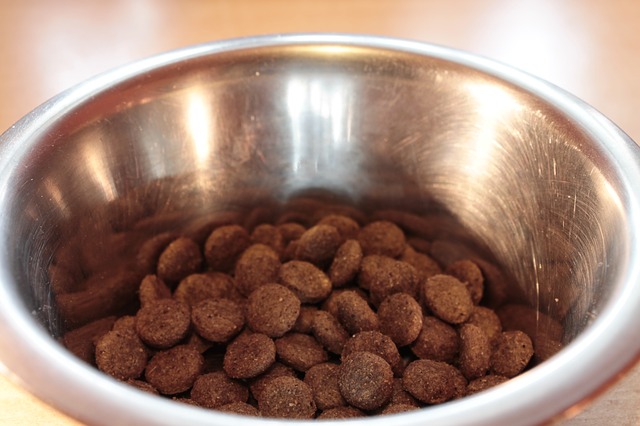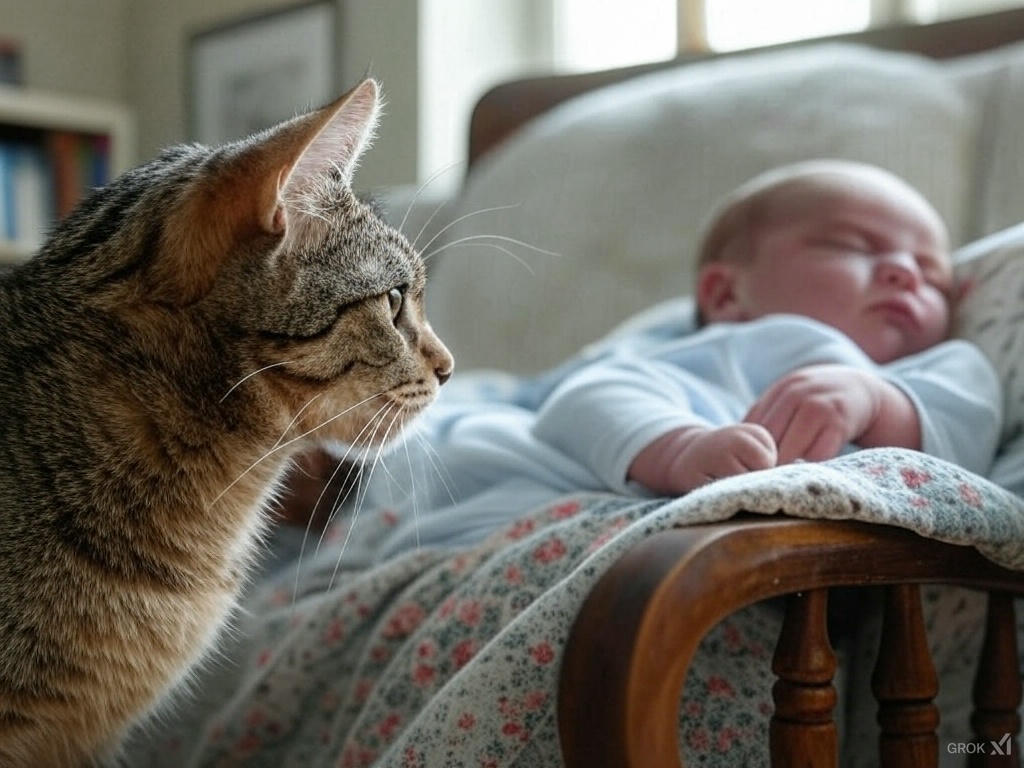Catnip Bear: The Ultimate Guide for Feline Fun
Contents
- 1 Catnip Bear Essentials: Understanding the Feline Favourite
- 2 The History and Evolution of Catnip Toys
- 3 How to Use a Catnip Bear Effectively
- 4 Catnip Bear Safety: What Every Cat Owner Should Know
- 5 The Benefits of Catnip Bears for Cat Health and Wellbeing
- 6 Catnip Bear Alternatives and Complementary Toys
- 7 Where to Buy the Best Catnip Bears
- 8 FAQs
- 8.0.1 How Often Should I Give My Cat a Catnip Bear?
- 8.0.2 Can Kittens Play with Catnip Bears?
- 8.0.3 Are There Any Cats That Don’t Respond to Catnip?
- 8.0.4 How Can I Refresh the Catnip in a Catnip Bear?
- 8.0.5 What Should I Do if My Cat Becomes Overstimulated?
- 8.0.6 How Can I Tell If My Cat Enjoys Their Catnip Bear?
- 8.0.7 How Long Do the Effects of Catnip Last?
- 8.0.8 Can I Wash My Catnip Bear?
- 8.0.9 What If My Cat Doesn’t Like Their Catnip Bear?
- 8.0.10 Where Can I Find Unique Catnip Bears?
- 8.1 Connect with us on Facebook!
Catnip Bear Essentials: Understanding the Feline Favourite
Cats, those enigmatic creatures often graced with a touch of mischief, have a special affinity for playthings that engage their senses. Among these cherished toys, the catnip bear stands out as a delightful favourite. This charming toy, often plush and cuddly, is filled with the irresistible herb known as catnip. But what makes a catnip bear so appealing to our feline friends?
What is a Catnip Bear and Why Do Cats Love It?
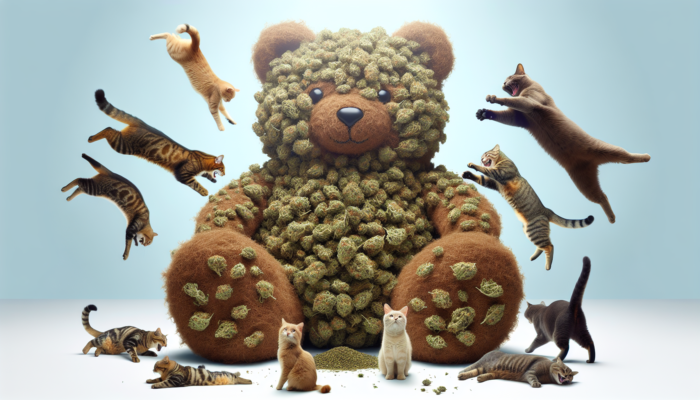
A catnip bear is more than just a cuddly toy; it’s a treasure trove of sensory delight for your beloved cat. The soft texture and playful design invite your cat to pounce, chew, and wrestle, while the enticing aroma of catnip tempts them to engage in spirited play. Cats are naturally curious creatures, and introducing a catnip bear into their environment provides an enriching experience that stimulates their instincts.
The allure lies in the combination of comfort and excitement that a catnip bear brings. As cats engage with the toy, they may exhibit behaviours such as rolling, rubbing, and even playful aggression, all of which can lead to happy and healthy playtime. These interactions not only entertain but also encourage physical exercise, which is essential for maintaining a healthy weight and muscle tone in our furry companions.
The Science Behind Catnip’s Effect on Cats
To truly appreciate the magic of the catnip bear, one must delve into the science that underpins its appeal. The secret ingredient is nepetalactone, a compound found in the leaves and stems of the catnip plant (Nepeta cataria). When a cat encounters this herb, the nepetalactone binds to receptors in their nasal tissue, triggering a cascade of reactions in the brain. This response can lead to a state of playful euphoria, characterised by behaviours such as chasing, rolling, and even vocalisation.
Interestingly, the effects of catnip are often fleeting, typically lasting around 10 to 15 minutes. After this initial burst of excitement, cats may lose interest for a while, only to be re-engaged after a rest period. This cyclical response helps to ensure that the catnip bear remains a novelty, maintaining its appeal over time. Understanding this fascinating interplay of science and behaviour can enrich the way we interact with our feline friends, enhancing their playtime experience.
Choosing the Right Catnip Bear for Your Cat
Not all catnip bears are created equal, and selecting the right one for your cat involves considering several factors. Size is an important aspect; a toy that is too small may pose a choking hazard, while one that is overly large might not be as appealing for play. Additionally, the material matters. Opt for durable, non-toxic fabrics that can withstand enthusiastic play without falling apart.
Moreover, the quality of the catnip inside the bear plays a critical role in its effectiveness. Look for products that use high-quality, organically grown catnip for the best results. Some manufacturers even include refillable pouches, allowing you to refresh the catnip periodically to maintain your cat’s interest in their beloved toy. Ultimately, the right catnip bear can provide endless hours of joy, making it an essential addition to your cat’s toy collection.
The History and Evolution of Catnip Toys
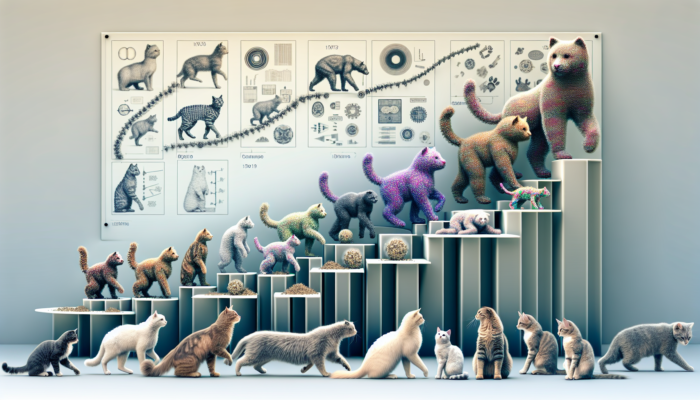
The journey of catnip toys, particularly the beloved catnip bear, is steeped in tradition and innovation. Understanding this history can deepen your appreciation for these delightful playthings.
From Ancient Times to Modern Day: A Brief History
Catnip has a rich history dating back thousands of years. This herb has been documented in ancient cultures, where it was often used for medicinal purposes and as a stimulant for cats. The allure of catnip has been recognised since ancient Egypt, where cats were revered and often depicted in art. As time progressed, the use of catnip transitioned from a herbal remedy to a fun and engaging toy for cats.
The modern iteration of catnip toys, including the catnip bear, began to emerge in the 20th century. As pet ownership grew in popularity, so did the demand for engaging and safe toys. The design of these toys has evolved, reflecting both the needs of cats and the aesthetics of their owners, leading to the charming and playful designs we see today.
Innovations in Catnip Toy Design
In recent years, innovation has transformed the landscape of catnip toys. Manufacturers have begun to incorporate durable materials that stand up to the rigours of play, ensuring that catnip bears can withstand the enthusiastic antics of cats. Additionally, many modern toys feature interactive elements, such as crinkly sounds or varied textures, designed to further entice cats and stimulate their senses.
The inclusion of refillable catnip pouches is another significant advancement, allowing owners to refresh the scent and maintain the toy’s appeal over time. Innovations like these not only enhance the play experience but also reflect a growing understanding of feline behaviour and preferences.
The Rise of the Catnip Bear in Popular Culture
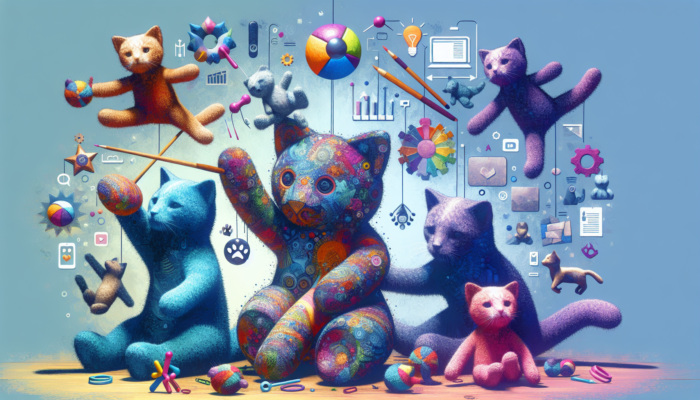
In recent years, the catnip bear has firmly established itself in popular culture. Social media platforms have become filled with adorable photos and videos of cats frolicking with their catnip bears, showcasing the joy these toys bring. Pet blogs and influencers often highlight the benefits of incorporating a catnip bear into a cat’s play routine, further elevating its status in the realm of pet products.
This cultural prominence has led to a proliferation of unique and artisanal catnip bears, crafted by small businesses and dedicated cat lovers. The creativity and variety of designs available today mean there is likely a perfect bear for every cat, making it a delightful addition to any feline’s toybox.
How to Use a Catnip Bear Effectively
Having a catnip bear is one thing, but knowing how to use it effectively can elevate your cat’s play experience to new heights. Engaging your cat with their new toy in the right way can make all the difference.
Introducing Your Cat to a Catnip Bear
The introduction of a catnip bear should be a gradual and enjoyable experience for your feline friend. Begin by allowing your cat to sniff and explore the toy at their own pace. Place the bear in their favourite resting spot or near their play area, encouraging curiosity. Some cats may be immediately drawn to the scent, while others might be more cautious. Patience is key; let them approach the bear when they feel ready.
Once your cat seems comfortable, gently engage them with the catnip bear by tossing it a short distance away or rolling it along the floor. This can stimulate their hunting instincts and prompt them to chase after it. The goal is to create positive associations with the bear, making it an enticing part of their playtime routine.
Maximising Playtime with a Catnip Bear
To truly maximise playtime with a catnip bear, incorporate it into structured play sessions. Schedule regular playtimes each day, using the bear to encourage active engagement. You can combine the bear with other toys, such as feather wands or laser pointers, to create a dynamic play experience. This variety keeps your cat excited and encourages them to use their natural hunting skills.
Remember that play is not just about physical activity; it also fosters mental stimulation. Engaging with a catnip bear allows your cat to explore their instincts in a safe environment, promoting both mental and physical well-being.
Maintaining and Refreshing Your Catnip Bear
To keep the joy of a catnip bear alive, regular maintenance is essential. Over time, the catnip inside the bear may lose its potency, so it’s wise to refresh it periodically. Many modern catnip bears feature a refillable pouch, making it easy to replace the catnip without having to buy a new toy altogether.
Additionally, cleanliness is crucial. Regularly inspect the bear for any signs of wear or damage, and wash it according to the manufacturer’s instructions. Keeping the toy hygienic ensures a safe environment for your cat to play while also prolonging the life of the bear itself.
Catnip Bear Safety: What Every Cat Owner Should Know
While catnip bears can offer immense joy and stimulation, safety should always be a priority for every cat owner. Understanding the risks and ensuring safe play can help maintain a worry-free experience for both you and your cat.
Identifying Safe Materials for Catnip Bears
When selecting a catnip bear, it’s vital to choose one made from safe, non-toxic materials. Avoid toys with small parts that could be swallowed or materials that may cause allergic reactions. Look for certificates or labels indicating that the toy meets safety standards. Opting for reputable brands can provide peace of mind, knowing that your cat is playing with a safe product.
Consider the construction of the bear as well. Durable stitching and robust materials can prevent the bear from falling apart during play, reducing the risk of your cat ingesting any harmful pieces. Prioritising safety ensures that your cat can enjoy their catnip bear without unnecessary risks.
Monitoring Your Cat’s Interaction with Catnip Bears
As your cat engages with their catnip bear, it’s important to monitor their behaviour. While most cats respond positively to catnip, some may become overly stimulated or aggressive. If you notice signs of agitation or excessive hyperactivity, it might be best to remove the bear for a while.
Additionally, keep an eye on your cat’s interaction with the toy. Ingesting any part of the bear can lead to gastrointestinal issues, so if you observe any signs of distress after play, consult your veterinarian. Regular supervision during playtime can prevent potential accidents and ensure your cat enjoys their time with the bear safely.
When to Replace Your Catnip Bear
Knowing when to replace a catnip bear is crucial for your cat’s safety. If the bear becomes excessively worn, torn, or has lost its catnip potency, it’s time for a replacement. A damaged toy can pose choking hazards or lead to unwanted ingestion of materials.
Additionally, if you notice your cat showing disinterest in the bear, it may be a sign that it’s no longer appealing. Investing in a new bear can renew your cat’s enthusiasm for play and provide them with a fresh source of entertainment.
The Benefits of Catnip Bears for Cat Health and Wellbeing
The advantages of incorporating a catnip bear into your cat’s life extend far beyond mere entertainment. These toys play a significant role in promoting overall health and wellbeing.
Promoting Physical Activity with Catnip Bears
Regular playtime with a catnip bear encourages cats to engage in physical activity, which is essential for maintaining a healthy weight and muscle tone. Cats are natural hunters, and the instinct to chase and pounce is embedded in their DNA. By providing a toy that simulates prey, you’re encouraging your cat to exercise in a fun and engaging way.
Physical activity is not only beneficial for weight management but also helps prevent obesity-related health problems. Engaging in regular play with a catnip bear can help reduce the risk of diabetes, joint issues, and other health complications that may arise from a sedentary lifestyle.
Enhancing Mental Stimulation Through Play
In addition to promoting physical health, a catnip bear provides vital mental stimulation. The interactive nature of these toys encourages cats to think critically and engage their problem-solving skills. As they navigate their playtime with the bear, they experience a variety of sensations and challenges, helping to keep their minds sharp.
Boredom can lead to behavioural issues in cats, including destructive tendencies or anxiety. By incorporating a catnip bear into your cat’s routine, you provide them with a source of entertainment that keeps their minds active and engaged, ultimately promoting a happier and more balanced feline.
Reducing Stress and Anxiety in Cats
For many cats, playtime serves as a valuable outlet for stress and anxiety. Engaging with a catnip bear can have a calming effect, allowing them to release pent-up energy and alleviate feelings of tension. The act of playing can be incredibly therapeutic, providing a constructive way for cats to cope with stressors in their environment.
Furthermore, the scent of catnip itself is known to have a soothing effect on many cats. By providing a catnip bear, you’re not only offering a toy but also a potential means of relaxation, helping your cat to feel more at ease in their surroundings.
Catnip Bear Alternatives and Complementary Toys
While catnip bears are a delightful choice for many cats, it’s beneficial to explore alternative options and complementary toys to enrich your cat’s playtime experience.
Exploring Other Catnip-Infused Toys
If your cat enjoys their catnip bear, consider expanding their toy collection to include other catnip-infused options. From catnip mice to plush balls, these toys can provide a variety of textures and shapes for your cat to explore. Each toy offers a different play experience while still harnessing the enticing scent of catnip.
Mixing up the types of toys available can help prevent boredom and keep your cat engaged. Experimenting with different shapes or sizes can also help you discover what your cat prefers, ensuring that playtime remains exciting.
Non-Catnip Options for Cats Sensitive to the Herb
It’s important to remember that not all cats respond to catnip. Approximately 30-50% of cats may not have a genetic predisposition to react to this herb. For these cats, consider exploring alternative options. Toys infused with silver vine or valerian root can provide similar stimulation and enjoyment for those felines who may not be as enamoured with catnip.
Offering a variety of play options ensures that all cats, regardless of their sensitivity to catnip, can find toys that engage them and promote healthy play behaviours.
Combining Catnip Bears with Other Play Activities
Integrating a catnip bear into broader play routines can create a well-rounded experience for your cat. Combine the bear with interactive toys, such as feather wands or laser pointers, to provide a dynamic play session that keeps your cat physically active and mentally stimulated.
By alternating between different types of play, you can maintain your cat’s interest and excitement. Regularly rotating toys and incorporating new play activities can contribute to a fulfilling and enriching environment for your feline companion.
Where to Buy the Best Catnip Bears
Once you’ve decided to introduce a catnip bear to your cat’s toy collection, the next step is finding the perfect one. Fortunately, a variety of options are available, both online and in brick-and-mortar stores.
Top Online Retailers for Catnip Bears
The convenience of online shopping has made it easier than ever to find high-quality catnip bears. Numerous reputable online pet retailers offer a wide selection of designs and styles, allowing you to browse customer reviews and compare products with ease. Look for retailers that specialise in pet supplies, as they are more likely to carry a range of quality options.
When shopping online, pay attention to product descriptions and materials used. This ensures that you choose a safe and durable toy for your cat. Many online shops even offer the option to purchase refills of catnip, making it a convenient way to maintain your cat’s playtime enjoyment.
Specialty Pet Shops and Boutiques
For those who prefer a more hands-on shopping experience, visiting local pet boutiques can be a delightful adventure. Speciality shops often carry unique and artisanal catnip bears that may not be available through larger retailers. These boutiques frequently stock handmade toys crafted with care, providing an opportunity to support local artisans while finding something special for your cat.
In addition to the unique designs, shopping at these local stores allows you to ask for recommendations from knowledgeable staff, ensuring you make an informed choice for your feline friend.
DIY Catnip Bear: Making Your Own at Home
For the creatively inclined, making your catnip bear can be a fun and rewarding project. With some fabric, stuffing, and high-quality catnip, you can create a bespoke toy tailored to your cat’s preferences.
To make a simple DIY catnip bear, cut two identical bear shapes from fabric, sew them together, and leave a small opening for stuffing. Fill the bear with catnip and stuffing, then sew the opening closed. This personalised touch not only provides a unique toy but also ensures that the materials are safe and non-toxic.
FAQs
How Often Should I Give My Cat a Catnip Bear?
Limit catnip exposure to a few times a week to prevent desensitisation and maintain its effectiveness. Rotating toys can help keep your cat engaged without overstimulating them.
Can Kittens Play with Catnip Bears?
Kittens can play with catnip bears, but their response may vary. Supervision is recommended, as kittens can sometimes be a bit rough with toys.
Are There Any Cats That Don’t Respond to Catnip?
Approximately 30-50% of cats do not respond to catnip due to genetic factors. However, they may enjoy other herbs, such as silver vine, which can elicit a playful response.
How Can I Refresh the Catnip in a Catnip Bear?
Many catnip bears come with a refillable pouch. Open the pouch, discard the old catnip, and replace it with fresh, high-quality catnip to reinvigorate the toy.
What Should I Do if My Cat Becomes Overstimulated?
If your cat shows signs of overstimulation, such as excessive aggression or anxiety, remove the catnip bear and allow them to calm down. Monitor their behaviour and provide a quiet space.
How Can I Tell If My Cat Enjoys Their Catnip Bear?
Look for signs of engagement, such as rolling, pouncing, and playful antics. If your cat frequently interacts with the bear and seems excited, it’s a good indicator they enjoy it.
How Long Do the Effects of Catnip Last?
The effects of catnip typically last around 10 to 15 minutes. After this period, cats may lose interest but can be re-engaged after a rest.
Can I Wash My Catnip Bear?
Yes, most catnip bears can be washed according to the manufacturer’s instructions. Regular cleaning helps maintain hygiene and prolongs the toy’s lifespan.
What If My Cat Doesn’t Like Their Catnip Bear?
If your cat shows little interest, try different textures or designs, or consider alternatives like toys infused with silver vine or valerian root to find something they prefer.
Where Can I Find Unique Catnip Bears?
Local pet boutiques often carry unique and artisanal catnip toys, including bears, not found in larger retail settings. Online retailers also offer a wide variety of designs to explore.
